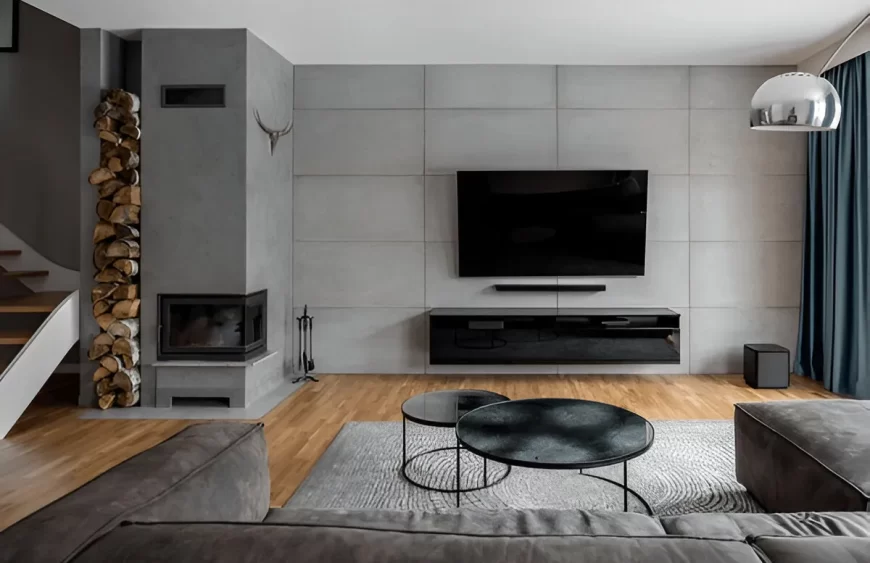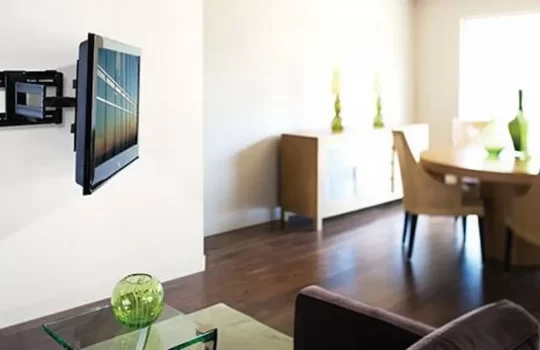Using a TV mount to install your television on the wall can dramatically enhance your viewing experience, save space, and create a clean, modern look in your living room, bedroom, or office. But before you get excited about the sleek design and space-saving benefits of a TV wall mount, it’s crucial to understand one of the most important yet overlooked factors: weight limits. Choosing the wrong TV mount not only jeopardizes your television but also poses a safety risk to people and property around it.
Let’s unpack everything you need to know about TV wall mount weight limits and how to make the right choice.
Why TV Wall Mount Weight Limit Matters
Think of the wall mount as the bridge between your expensive flat-screen and your home’s infrastructure. If that bridge isn’t strong enough to hold the weight, the consequences can be catastrophic. Ignoring weight limits can lead to wall damage, a shattered screen, or worse—injuries due to falling equipment. Manufacturers rigorously test each mount to determine how much load it can bear without compromising safety or performance. Adhering to these limits is non-negotiable.
Understanding TV Weight Versus Size
A common mistake many consumers make is assuming that if a wall mount supports a specific screen size, it will automatically support their TV. But size doesn’t always reflect weight. For example, an older 42-inch plasma TV may weigh significantly more than a newer 55-inch LED model. Therefore, always check the weight of your TV in the user manual or manufacturer’s website before purchasing a mount.
Look for both:
- VESA pattern compatibility (the hole pattern at the back of your TV)
- Weight capacity of the wall mount
Both metrics are critical to ensure a secure and lasting installation.
How to Find the Weight Limit of a TV Wall Mount
TV wall mounts come with clearly specified weight capacities, typically listed in product manuals or online descriptions. Here’s how to interpret this data:
- Maximum Load Capacity: This refers to the heaviest TV that the mount can safely support. Choose a mount rated for at least 20% more than your TV’s weight for added safety.
- Mount Type: Different styles of mounts support different weight ranges. For example:
- Fixed mounts usually support heavier TVs.
- Tilting or full-motion mounts may have reduced capacity due to their moving parts and extended arms.
If you’re unsure, reach out to the manufacturer’s customer support or refer to installation guides. Don’t guess—verify.
Wall Type Matters Too
The strength of your wall is just as important as the strength of your mount. A high-capacity mount is useless if the wall it’s attached to can’t handle the load. Different wall materials support different weights:
- Drywall with studs: Most common and generally suitable for TV mounts, provided you anchor directly into the studs.
- Concrete or brick: Offers solid support but requires special masonry anchors.
- Drywall without studs: Not ideal unless you use specialized anchors or mounting plates designed for such installations.
If you’re mounting on a less conventional surface, consult a professional or use purpose-built mounting hardware.
Factors That Affect Mounting Safety
Weight isn’t the only factor to consider. Here are additional variables that affect the safety and success of your installation:
- Mounting Height and Angle: Mounting the TV too high or at a steep angle can exert extra stress on the mount and the wall.
- Bracket Design: Cheaper mounts may skimp on material quality or weld strength, both of which affect load-bearing capabilities.
- Cable Management: Excessive tugging on cables can subtly dislodge your TV over time.
- Vibration: If you’re mounting near a door, window, or in a high-traffic area, small but repeated vibrations can slowly loosen screws or fasteners.
Signs You’ve Chosen the Wrong Mount
Even with research, mistakes happen. Be on the lookout for these red flags:
- The mount sags after installation
- The wall makes creaking noises
- The screws feel loose or don’t tighten properly
- The TV tilts unintentionally
These are warning signs that either the mount or the wall isn’t suited for the weight. Take action immediately to prevent a potential accident.
Best Practices for Safe Installation
Once you’ve selected the right TV mount for your screen’s size and weight, follow these best practices to ensure a safe setup:
- Use a Stud Finder: Always anchor into wall studs when dealing with drywall.
- Double-Check VESA Compatibility: Ensure the mount aligns perfectly with the mounting holes.
- Don’t Exceed the Load Limit: Avoid testing the “just a little over” theory—it’s not worth the risk.
- Use the Right Tools: Power drills, levellers, and stud finders are essential.
- Follow Instructions: Read the manufacturer’s guidelines carefully—don’t skip steps.
If you’re not confident in your DIY skills, hiring a professional installer is worth the investment.
Future-Proofing Your Setup
If you’re planning to upgrade your TV soon or thinking about moving, it’s smart to invest in a mount with a higher weight capacity and adjustable settings. Modular or full-motion mounts offer greater flexibility and long-term compatibility. They also allow you to fine-tune your viewing angles for optimal comfort, which is an added bonus.
Conclusion
Choosing the right TV wall mount involves more than matching the screen size. It’s about ensuring that your mount can safely and securely hold the weight of your TV while being compatible with your wall type and setup preferences. Overlooking the weight limit can lead to costly damages and safety risks, but understanding these key details puts you on the path to a smooth and secure installation.
Whether you’re a first-time buyer or upgrading your home theater setup, never compromise on safety. Look beyond the packaging and take the time to understand the specs, materials, and mounting conditions. It’s a small effort that delivers big peace of mind.
Looking for a trusted solution that meets all safety standards and supports various TV models? Explore the range of premium-quality mounts at Tono Systems, where engineering meets innovation to offer you secure and stylish wall-mounting options.



